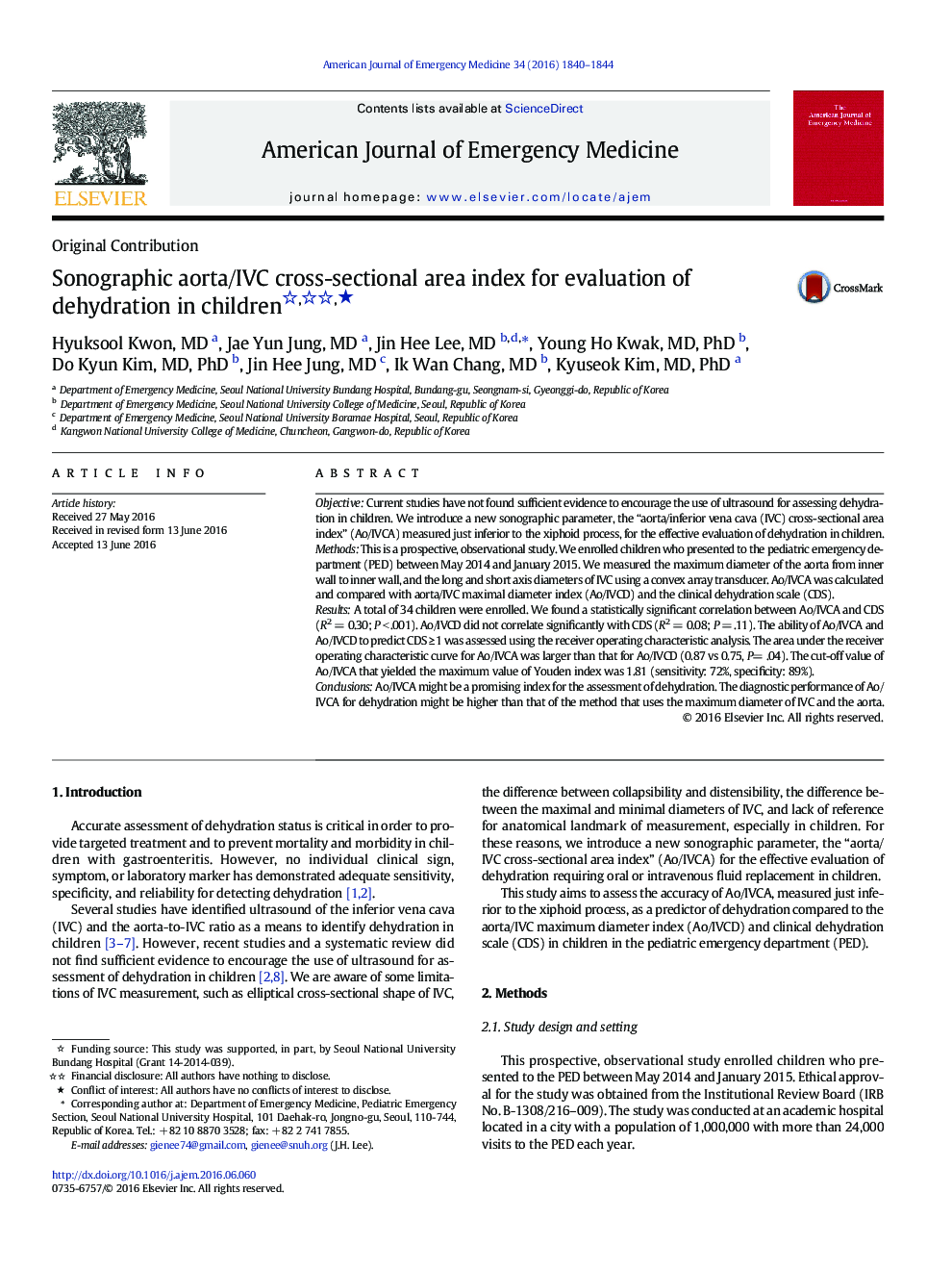| Article ID | Journal | Published Year | Pages | File Type |
|---|---|---|---|---|
| 3223035 | The American Journal of Emergency Medicine | 2016 | 5 Pages |
ObjectiveCurrent studies have not found sufficient evidence to encourage the use of ultrasound for assessing dehydration in children. We introduce a new sonographic parameter, the “aorta/inferior vena cava (IVC) cross-sectional area index” (Ao/IVCA) measured just inferior to the xiphoid process, for the effective evaluation of dehydration in children.MethodsThis is a prospective, observational study. We enrolled children who presented to the pediatric emergency department (PED) between May 2014 and January 2015. We measured the maximum diameter of the aorta from inner wall to inner wall, and the long and short axis diameters of IVC using a convex array transducer. Ao/IVCA was calculated and compared with aorta/IVC maximal diameter index (Ao/IVCD) and the clinical dehydration scale (CDS).ResultsA total of 34 children were enrolled. We found a statistically significant correlation between Ao/IVCA and CDS (R2 = 0.30; P < .001). Ao/IVCD did not correlate significantly with CDS (R2 = 0.08; P = .11). The ability of Ao/IVCA and Ao/IVCD to predict CDS ≥ 1 was assessed using the receiver operating characteristic analysis. The area under the receiver operating characteristic curve for Ao/IVCA was larger than that for Ao/IVCD (0.87 vs 0.75, P= .04). The cut-off value of Ao/IVCA that yielded the maximum value of Youden index was 1.81 (sensitivity: 72%, specificity: 89%).ConclusionsAo/IVCA might be a promising index for the assessment of dehydration. The diagnostic performance of Ao/IVCA for dehydration might be higher than that of the method that uses the maximum diameter of IVC and the aorta.
